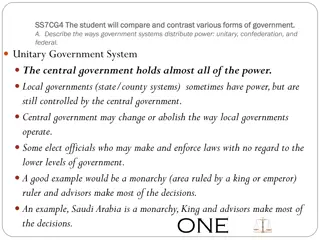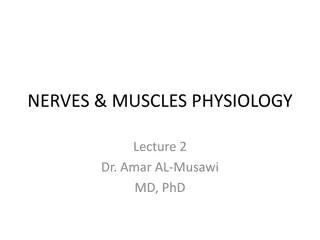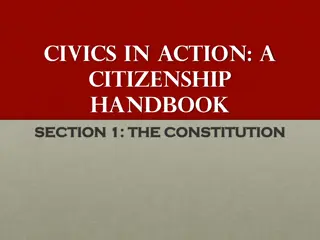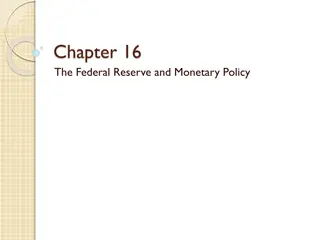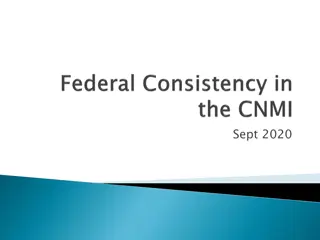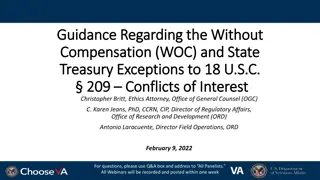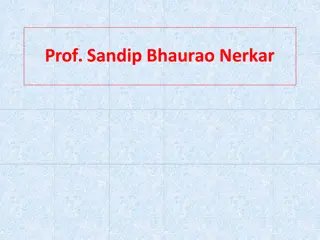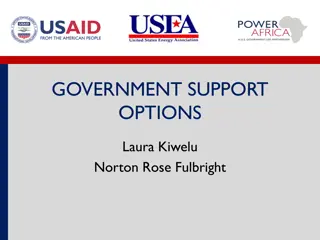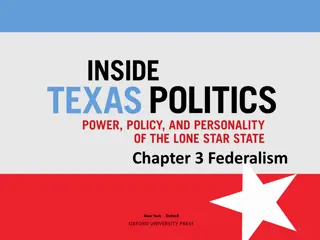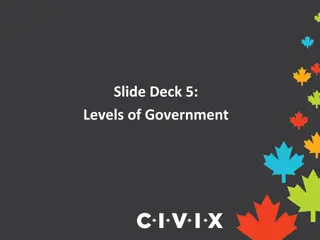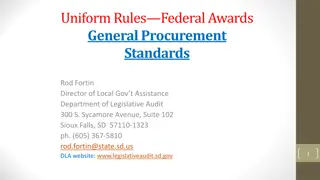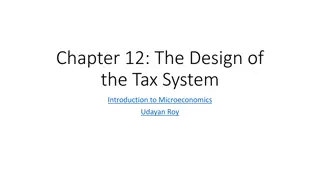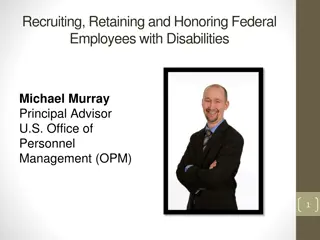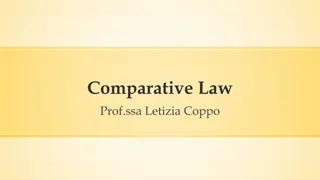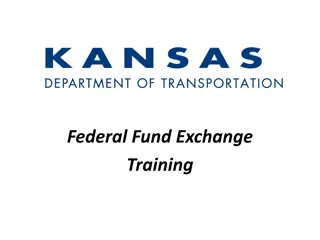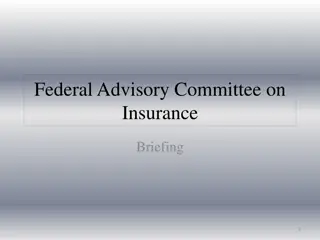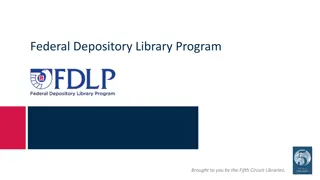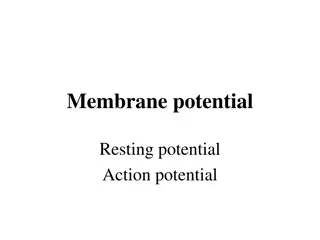Understanding the Federal Government in Action
Explore the key aspects of the federal government, focusing on the roles and functions of Congress, the President, and the Cabinet. Learn about the two primary functions of Congress, the process of how a bill becomes a law, job titles and duties of the President, and the significance of the Cabinet in advising the President on policy matters.
Download Presentation

Please find below an Image/Link to download the presentation.
The content on the website is provided AS IS for your information and personal use only. It may not be sold, licensed, or shared on other websites without obtaining consent from the author. Download presentation by click this link. If you encounter any issues during the download, it is possible that the publisher has removed the file from their server.
E N D
Presentation Transcript
Civics in Action: A Citizenship Handbook SECTION 2: THE FEDERAL GOVERNMENT
CONGRESS The Legislative Branch (Congress) consists of two houses: the House of Representatives and the Senate HOUSE OF REPRESENTATIVES: 435 members, states representation is proportionate to its population, two-year term of office SENATE: 100 members, all states are represented by two senators, six-year term of office What are the two primary functions of Congress?
Some terms. Appropriate- to set aside money for a government project Impeach- to bring formal charges against a government official Constituents- people (citizens) of a representative s or senator s home state or district
How a bill becomes law (BASIC) 1. Bill is proposed (either in the House or Senate) 2. Bill is sent to various committees for changes/passage. 3. Process is repeated in the other house of Congress. 4. President signs the bill (making it law) OR vetoes it 5. Congress may override the veto with a 2/3 majority vote in both houses.
Job Titles/Duties of the President Chief Executive: Head of the Executive Branch; utilize Cabinet department officers to advise, assist with decisions Chief Diplomat: Director of Foreign Policy; appoints ambassadors, negotiates foreign treaties (which must be approved by the Senate). Commander-in-Chief: Head of the Military; may authorize military to intervene or offer help in crises around the world; CANNOT declare war; may mobilize military for maximum 60-day deployment on his own authority
Job Titles of the President (cont.) Chief of State: Face of America; symbolic representative of all Americans while abroad; greets foreign dignitaries who visit the United States. Legislative Leader: helps propose laws; works with Congress on passage of laws; gives annual State of the Union Address to present goals for upcoming year Chief of Party: the President is the top official of his political party (Democrat or Republican); makes decisions about party, publicly speaks to support other members of his political party
The Cabinet These are the President s top advisors in 15 different Executive Departments (areas of government); advise the President, help him establish government policies.
District and Appeals Courts Lower Federal Courts include the following: District Court- hear criminal and civil cases under Federal jurisdiction Appeals Court- review District court s decisions, may change the verdict or initiate a new trial * The U.S. Supreme Court has 9 total judges (8 Associate justices and 1 Chief Justice)
Supreme Courts significance The U.S. Supreme Court is a Legal institution because it settles disputes and interprets the laws of the United States of America. The U.S. Supreme Court is a Political institution because as it applies the law to specific cases, it directs future laws and policies. This is called setting precedents.


